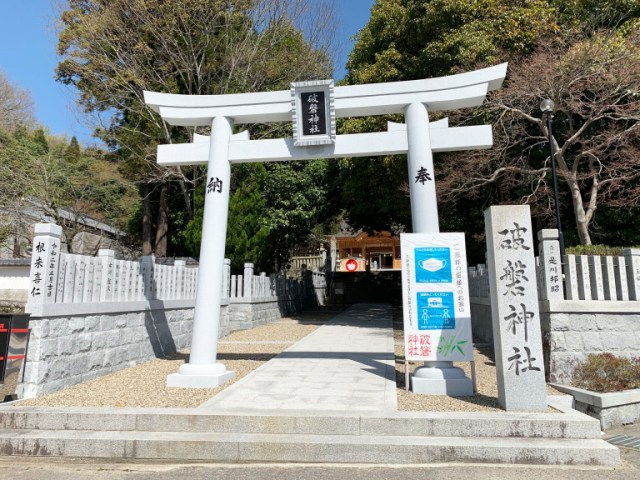
This shrine’s anime-level boulder has an anime-level backstory.
One of the cool things about Japan is that looking at the names of places gives you a sense of their history or distinguishing characteristics. “Tokyo,” for example, famously means “eastern capital,” because it’s located at the eastern end of the country, and its “Ginza” district means “silver seat,” a nod to the mint that used to be located in the neighborhood.
And then there’s Haban Shrine, whose name means “destroyed rock.”
But it was more than just linguistic curiosity that had our Japanese-language reporter Seiji Nakazawa intrigued. Having heard that the shrine has a split boulder, or wareiwa, he was instantly reminded of the scene in Demon Slayer: Kimetsu no Yaiba where hero Tanjiro slices through a rock with his katana, and felt compelled to make the trip out to Himeji, in Hyogo Prefecture, to visit Haban Shrine for himself.
Now, hearing “Himeji,” most people first envision Himeji Castle, in the developed city center where the Shinkansen bullet train stops. Haban Shrine, though, is in the rural outskirts of the town, near Oichi Station on the Kishin Line. Even though it’s only about a 15-minute ride from Himeji Station, the surroundings are pure countryside.
The shrine’s torii gate is visible from the platform, and just a five-minute walk away, so Seiji strolled right over.
Rustic as the scenery may be, the shrine itself is remarkably well maintained, with a picturesque stone path and shrine hall. The principal deity enshrined here is Sugawara no Michizane, also known as Tenjin, the god of learning, so Seiji paused to say a quick prayer in hopes of boosting his mental capacity.
However, Seiji couldn’t spot the split boulder anywhere, so he headed over to one of the buildings where a miko (shrine maiden) was posted to ask where it was. He then learned that Haban Shrine’s wareiwa isn’t actually on the shrine grounds, but elsewhere in town. The miko did give him a map that showed its location, though.
▼ Haban Shrine (red), Oichi Station (blue) and wareiwa (green)
“Ah, OK, just back over the railroad tracks, and two signal lights away,” thought Seiji. “No sweat.”
However, Seiji had momentarily forgotten that he wasn’t in Tokyo anymore, and “two blocks” is a much longer distance in the country than it is in the city, and the walk ended up taking close to half an hour. Still, it was nice to take in some wide-open views, and he had audio accompaniment from the warblers calling out from the trees around town.
Eventually, he got to the second signal light, which looks like a T-intersection at first glance, but actually has another small street that leads down a slope.
Go down that path, and after a while you’ll spot a sign for the split boulder (われ岩) on your right side. Hang a right at the sign, and from there it’s straight on into the foothills…
…and through a bamboo grove…
…until you see the wareiwa!
Wrapped around the boulder is a braided shimenawa purification rope, and running from top to bottom is a deep gash that cleaves the stone in two in its upper section.
▼ Seiji, with his hair still showing signs of his Kyojuro Rengoku makeover, snapped a photo with the Demon Slayer-like rock.
But of course, Haban Shrine, is much, much older than Demon Slayer, which made its manga debut in 2016, so obviously this wasn’t Tanjiro’s handiwork. So if the shrine’s boulder wasn’t split by swordsman Tanjiro, who was it split by?
According to local legends, by Empress Jingu, who is thought to have ruled Japan nearly two millennia ago, from 201 to 269.
The story goes that after Jingu’s husband, the Emperor Chuai, was killed by rebels, the empress took brutal vengeance upon them. Grabbing a bow, she fired a hail of arrows at the rebel forces, and her third shot hit the Haban Shrine boulder with such force that it tore a vertical chunk out of it.
Empress Jingu didn’t need a blade to slice up a boulder, and as Seiji left, he couldn’t help thinking Demon Slayers demons would have been slayed a lot more quickly had she been part of its band of heroes.
Photos © SoraNews24
● Want to hear about SoraNews24’s latest articles as soon as they’re published? Follow us on Facebook and Twitter!
[ Read in Japanese ]


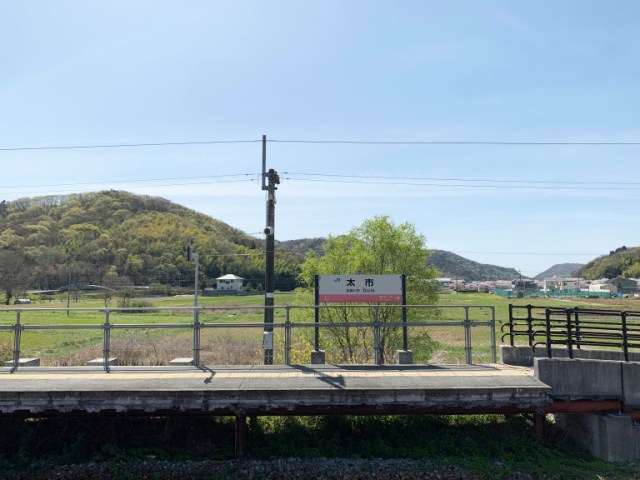
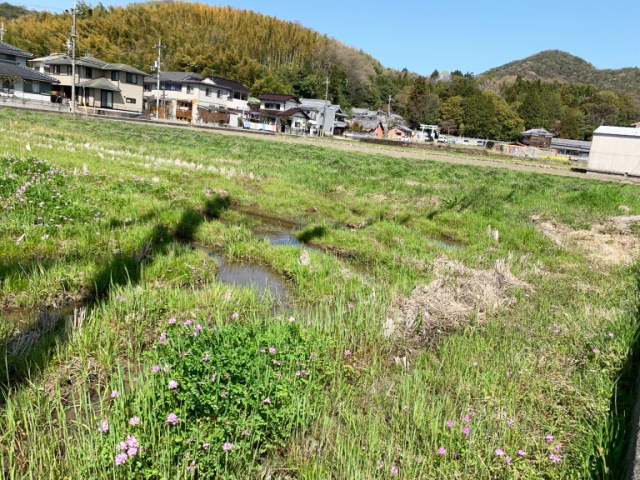
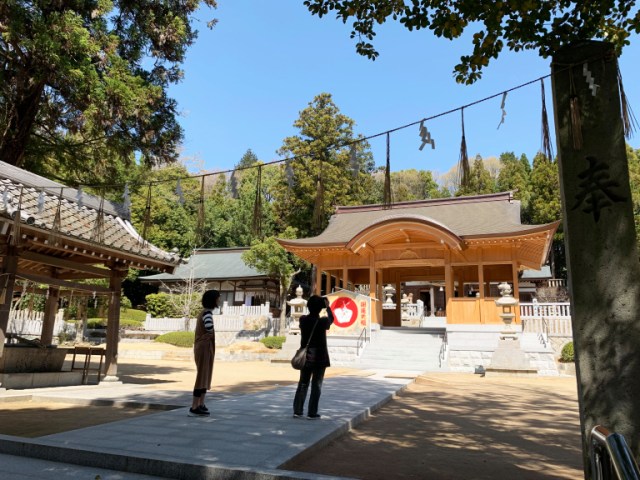
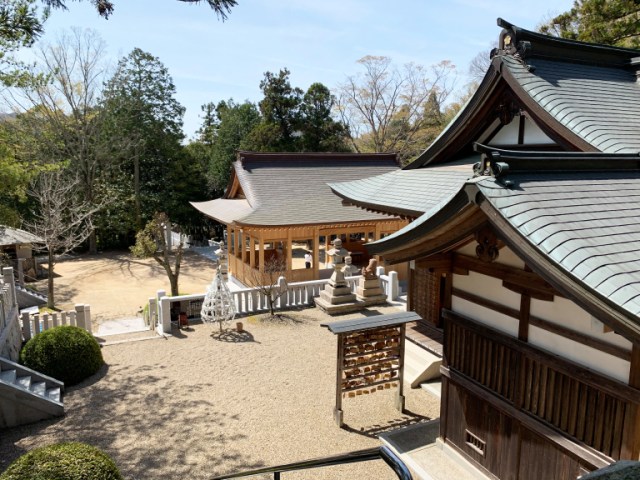
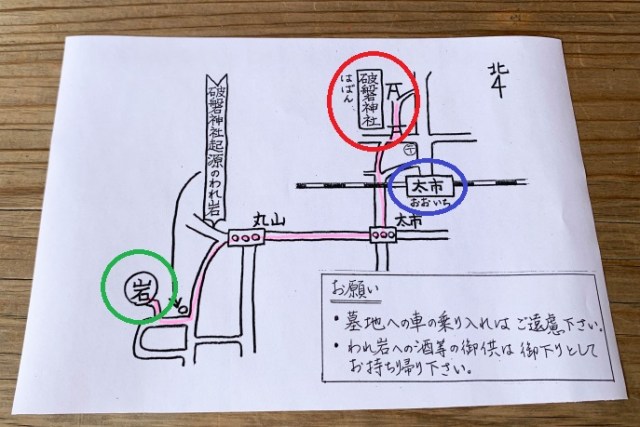
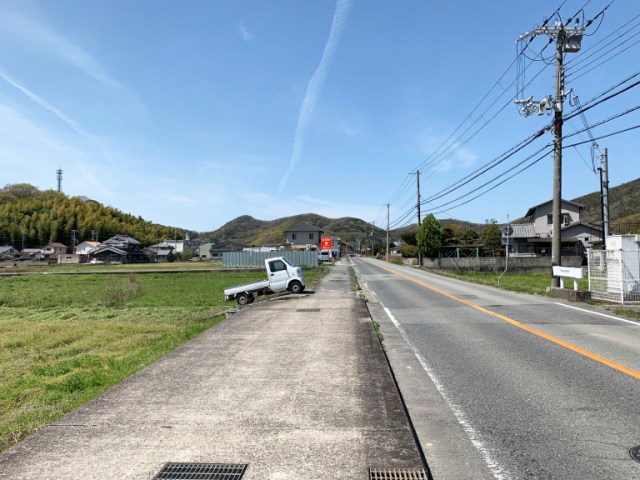
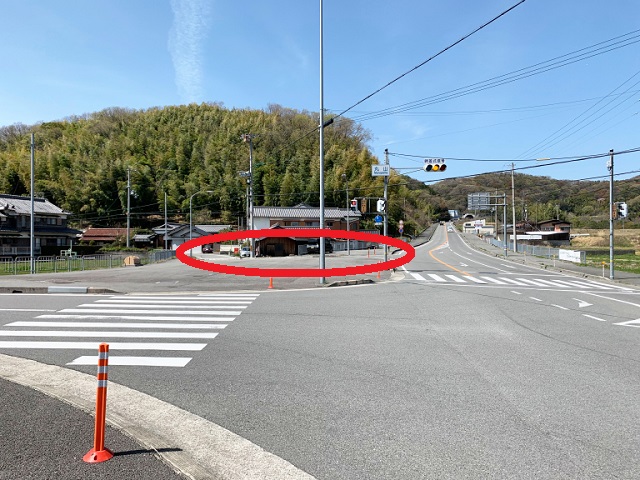
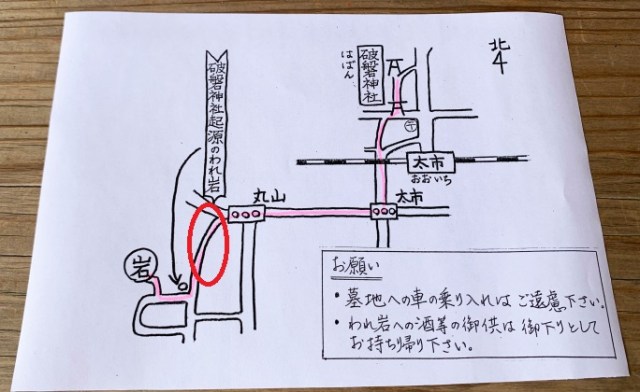
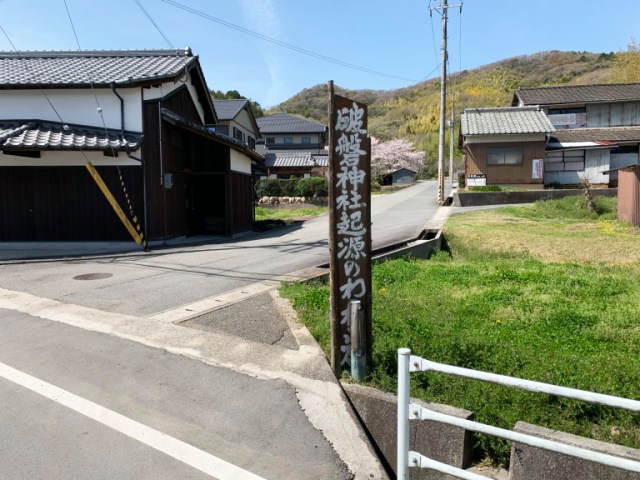
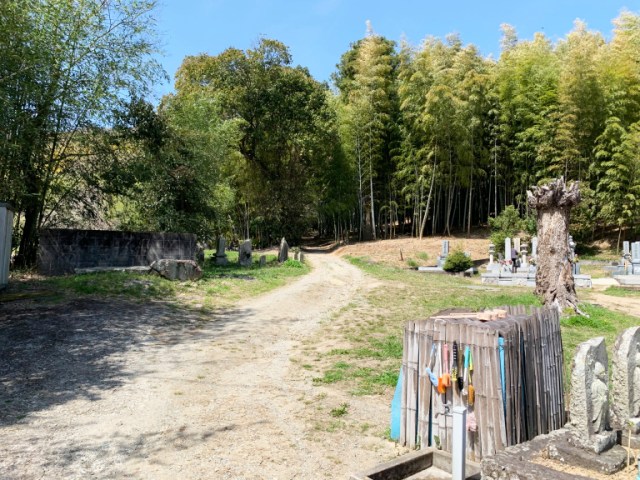
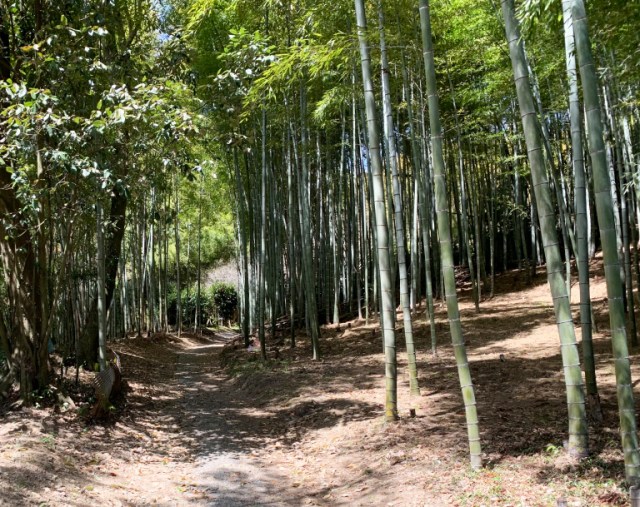
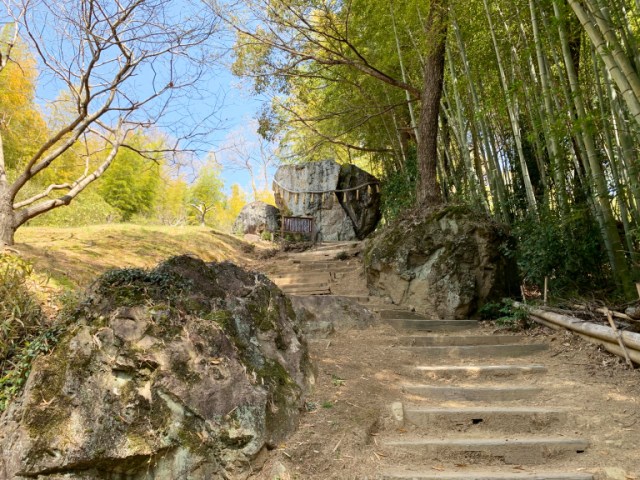
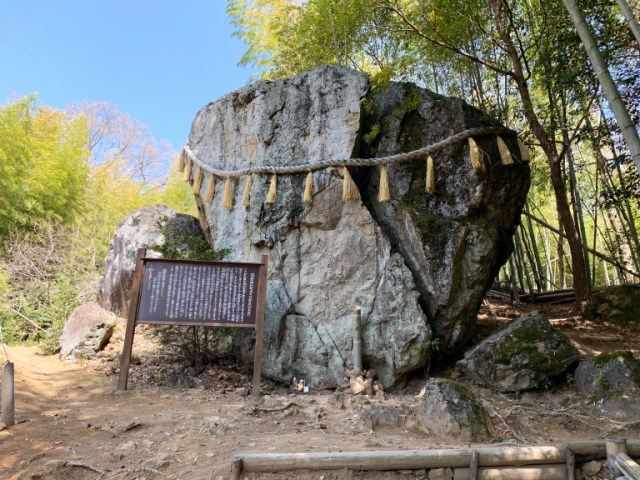
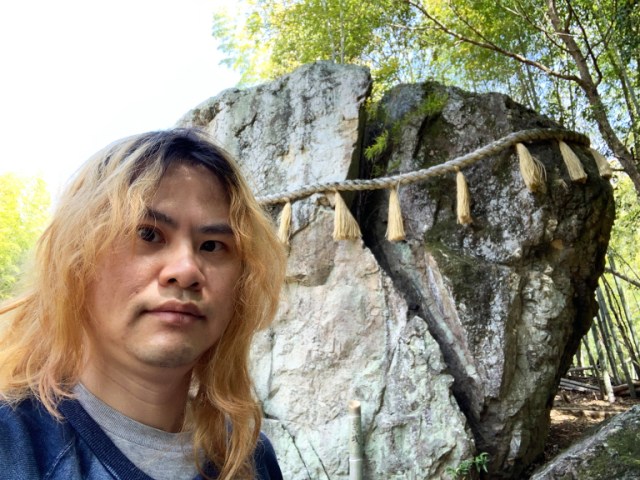

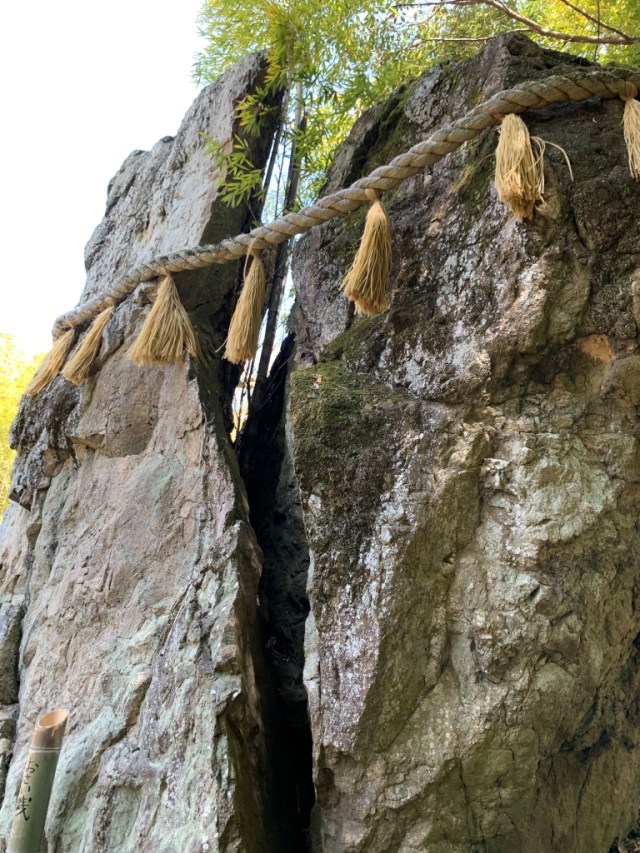
 Feel what it’s like to be a Shinto shrine maiden with shrine’s experience package for foreigners
Feel what it’s like to be a Shinto shrine maiden with shrine’s experience package for foreigners Demon Slayer teams up with beef bowl chain to excite fans, test their dexterity with Tanjiro bowl
Demon Slayer teams up with beef bowl chain to excite fans, test their dexterity with Tanjiro bowl Japan’s “killing stone” splits in two, possibly unleashing evil nine-tailed fox spirit
Japan’s “killing stone” splits in two, possibly unleashing evil nine-tailed fox spirit Tokyo’s 400-year-old Shinto shrine welcomes Roombas to help with annual susuosame ceremony【Video】
Tokyo’s 400-year-old Shinto shrine welcomes Roombas to help with annual susuosame ceremony【Video】 Is the Universal Studios Japan Demon Slayer ride worth riding if you’re not a Demon Slayer fan?
Is the Universal Studios Japan Demon Slayer ride worth riding if you’re not a Demon Slayer fan? McDonald’s new Happy Meals offer up cute and practical Sanrio lifestyle goods
McDonald’s new Happy Meals offer up cute and practical Sanrio lifestyle goods All-you-can-drink Starbucks and amazing views part of Tokyo’s new 170 meter-high sky lounge
All-you-can-drink Starbucks and amazing views part of Tokyo’s new 170 meter-high sky lounge Studio Ghibli glasses cases let anime characters keep an eye on your spectacles
Studio Ghibli glasses cases let anime characters keep an eye on your spectacles Beautiful Sailor Moon manhole cover coasters being given out for free by Tokyo tourist center
Beautiful Sailor Moon manhole cover coasters being given out for free by Tokyo tourist center Starbucks reopens at Shibuya Scramble Crossing with new look and design concept
Starbucks reopens at Shibuya Scramble Crossing with new look and design concept Kyoto’s 100 Demons yokai monster parade returns!
Kyoto’s 100 Demons yokai monster parade returns! Mister Donut ready to make hojicha dreams come true in latest collab with Kyoto tea merchant
Mister Donut ready to make hojicha dreams come true in latest collab with Kyoto tea merchant The oldest tunnel in Japan is believed to be haunted, and strange things happen when we go there
The oldest tunnel in Japan is believed to be haunted, and strange things happen when we go there Hey, Japanese taxi driver! Take us to your favorite restaurant in Tsuruga City!
Hey, Japanese taxi driver! Take us to your favorite restaurant in Tsuruga City! Rice bran, the skincare product used by Japanese women for centuries and now Chloë Grace Moretz
Rice bran, the skincare product used by Japanese women for centuries and now Chloë Grace Moretz Disney princesses get official manga makeovers for Manga Princess Cafe opening in Tokyo
Disney princesses get official manga makeovers for Manga Princess Cafe opening in Tokyo More foreign tourists than ever before in history visited Japan last month
More foreign tourists than ever before in history visited Japan last month Beautiful new Final Fantasy T-shirt collection on the way from Uniqlo【Photos】
Beautiful new Final Fantasy T-shirt collection on the way from Uniqlo【Photos】 Is the new Shinkansen Train Desk ticket worth it?
Is the new Shinkansen Train Desk ticket worth it? Foreign English teachers in Japan pick their favorite Japanese-language phrases【Survey】
Foreign English teachers in Japan pick their favorite Japanese-language phrases【Survey】 Japanese convenience store packs a whole bento into an onigiri rice ball
Japanese convenience store packs a whole bento into an onigiri rice ball We try out “Chan Ramen”, an underground type of ramen popular in the ramen community
We try out “Chan Ramen”, an underground type of ramen popular in the ramen community Studio Ghibli releases Kiki’s Delivery Service chocolate cake pouches in Japan
Studio Ghibli releases Kiki’s Delivery Service chocolate cake pouches in Japan Japan’s bone-breaking and record-breaking roller coaster is permanently shutting down
Japan’s bone-breaking and record-breaking roller coaster is permanently shutting down New definition of “Japanese whiskey” goes into effect to prevent fakes from fooling overseas buyers
New definition of “Japanese whiskey” goes into effect to prevent fakes from fooling overseas buyers Our Japanese reporter visits Costco in the U.S., finds super American and very Japanese things
Our Japanese reporter visits Costco in the U.S., finds super American and very Japanese things Studio Ghibli unveils Mother’s Day gift set that captures the love in My Neighbour Totoro
Studio Ghibli unveils Mother’s Day gift set that captures the love in My Neighbour Totoro Foreign passenger shoves conductor on one of the last full runs for Japan’s Thunderbird train
Foreign passenger shoves conductor on one of the last full runs for Japan’s Thunderbird train Domino’s Japan now sells…pizza ears?
Domino’s Japan now sells…pizza ears? New Japanese KitKat flavour stars Sanrio characters, including Hello Kitty
New Japanese KitKat flavour stars Sanrio characters, including Hello Kitty Kyoto creates new for-tourist buses to address overtourism with higher prices, faster rides
Kyoto creates new for-tourist buses to address overtourism with higher prices, faster rides Sales of Japan’s most convenient train ticket/shopping payment cards suspended indefinitely
Sales of Japan’s most convenient train ticket/shopping payment cards suspended indefinitely Sold-out Studio Ghibli desktop humidifiers are back so Totoro can help you through the dry season
Sold-out Studio Ghibli desktop humidifiers are back so Totoro can help you through the dry season Japanese government to make first change to romanization spelling rules since the 1950s
Japanese government to make first change to romanization spelling rules since the 1950s Ghibli founders Toshio Suzuki and Hayao Miyazaki contribute to Japanese whisky Totoro label design
Ghibli founders Toshio Suzuki and Hayao Miyazaki contribute to Japanese whisky Totoro label design Doraemon found buried at sea as scene from 1993 anime becomes real life【Photos】
Doraemon found buried at sea as scene from 1993 anime becomes real life【Photos】 Tokyo’s most famous Starbucks is closed
Tokyo’s most famous Starbucks is closed One Piece characters’ nationalities revealed, but fans have mixed opinions
One Piece characters’ nationalities revealed, but fans have mixed opinions We asked a Uniqlo employee what four things we should buy and their suggestions didn’t disappoint
We asked a Uniqlo employee what four things we should buy and their suggestions didn’t disappoint Princesses, fruits, and blacksmiths: Study reveals the 30 most unusual family names in Japan
Princesses, fruits, and blacksmiths: Study reveals the 30 most unusual family names in Japan At this Kyoto shrine, be careful what you wish for—and how—, because you just might get it
At this Kyoto shrine, be careful what you wish for—and how—, because you just might get it The only path to this Nagasaki Shinto shrine gets swallowed by the sea every day【Video】
The only path to this Nagasaki Shinto shrine gets swallowed by the sea every day【Video】 Japanese voodoo dolls with foreign politician photo keep getting nailed to town’s shrine trees
Japanese voodoo dolls with foreign politician photo keep getting nailed to town’s shrine trees Demon Slayer anime franchise gets new edible content with Kimetsu no Yaiba-yaki sweets【Tasting】
Demon Slayer anime franchise gets new edible content with Kimetsu no Yaiba-yaki sweets【Tasting】 Yaoi fans rejoice as Shinto shrine seems to open part-time positions for male shrine maidens
Yaoi fans rejoice as Shinto shrine seems to open part-time positions for male shrine maidens “Have fun seeing what comes out” gacha machine is a mystery in more ways than one
“Have fun seeing what comes out” gacha machine is a mystery in more ways than one “Cat shrine” status causing problems for Japan’s millennium-old Izumoiwai Shrine
“Cat shrine” status causing problems for Japan’s millennium-old Izumoiwai Shrine The most crowded place in Tokyo? Might be the Kanda Matsuri festival, but it’s still awesome
The most crowded place in Tokyo? Might be the Kanda Matsuri festival, but it’s still awesome Demon Slayer Nichiren Blades ready for new duty: Slicing through your sweets as dessert knives
Demon Slayer Nichiren Blades ready for new duty: Slicing through your sweets as dessert knives Japanese shrine creates special water fountain for thirsty bees
Japanese shrine creates special water fountain for thirsty bees TripAdvisor Japan announces the country’s 10 favorite shrines and temples
TripAdvisor Japan announces the country’s 10 favorite shrines and temples Shiratani Unsuikyo: The breathtaking anime setting where Princess Mononoke was born
Shiratani Unsuikyo: The breathtaking anime setting where Princess Mononoke was born Sacred 1,200-year-old tree toppled by severe storm at shrine in central Japan【Photos】
Sacred 1,200-year-old tree toppled by severe storm at shrine in central Japan【Photos】 Moms vs. demon slayers — Japanese grade schoolers asked: “Who do you respect most and why?”
Moms vs. demon slayers — Japanese grade schoolers asked: “Who do you respect most and why?” Is it okay to bleach hair that has been surgically transplanted? Seiji reports on his hairline
Is it okay to bleach hair that has been surgically transplanted? Seiji reports on his hairline
Leave a Reply